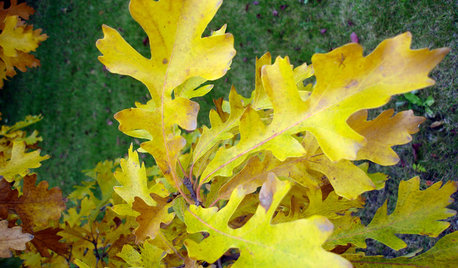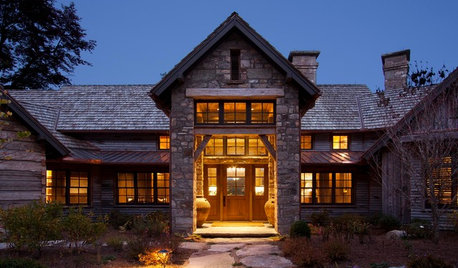Swamp chestnut oaks dying
gardener_sandy
14 years ago
Related Stories

GARDENING GUIDESCelebrate Eastern Oaks for Wildlife, Longevity and Seasonal Interest
There might not be a more important tree to have in your eastern U.S. landscape — if you can fit one in
Full Story
RUSTIC STYLEOld Southern Highlands Style for a New North Carolina Retreat
Antique woods add a sense of history to a gracious part-time home in the Blue Ridge Mountains
Full Story
SIDE YARD IDEASNarrow Trees for Tight Garden Spaces
Boost interest in a side yard or another space-challenged area with the fragrance and color of these columnar trees
Full Story
GARDENING GUIDESHow I Learned to Be an Imperfect Gardener
Letting go can lead to a deeper level of gardening and a richer relationship with the landscape. Here's how one nature lover did it
Full Story
FALL GARDENINGHouzz Call: Show Us Your Fall Color!
Post pictures of your fall landscape — plants, leaves, wildlife — in the Comments section. Your photo could appear in an upcoming article
Full Story
FLOORS10 Ways to Make the Most of Your Home’s Original Floors
Save yourself the cost of replacing your old floorboards with these tips for a new finish
Full Story
GARDENING GUIDESGreat Design Plant: Butterfly Milkweed, a Beacon in the Prairie
Vivacious orange flowers for you, nectar for the butterflies and bees. Asclepias tuberosa is worth planting for more reasons than one
Full Story
GARDENING GUIDESAttract Hummingbirds and Bees With These Beautiful Summer Flowers
Roll out a welcome mat for pollinators to keep your landscape in balance and thriving
Full Story
MOST POPULAR11 Reasons to Paint Your Interior Doors Black
Brush on some ebony paint and turn a dull doorway into a model of drop-dead sophistication
Full Story
FURNITUREForever Furniture: A Buyer’s Guide to the Dining Table
There comes a time when a make-do piece of furniture won’t do. We give you a leg up on choosing the right table for you
Full Story







Dan _Staley (5b Sunset 2B AHS 7)
brandon7 TN_zone7
Related Professionals
East Rancho Dominguez Landscape Architects & Landscape Designers · Milford Landscape Contractors · Mooresville Landscape Contractors · Cary Landscape Contractors · Mashpee Landscape Contractors · Porterville Landscape Contractors · Quincy Landscape Contractors · Washington Landscape Contractors · Guilford Siding & Exteriors · Richmond Siding & Exteriors · Menomonee Falls Siding & Exteriors · Lockport Decks, Patios & Outdoor Enclosures · Schaumburg Decks, Patios & Outdoor Enclosures · Vero Beach Decks, Patios & Outdoor Enclosures · Eustis Decks, Patios & Outdoor EnclosuresDan _Staley (5b Sunset 2B AHS 7)
brandon7 TN_zone7
brandon7 TN_zone7
brandon7 TN_zone7
rhizo_1 (North AL) zone 7
gardener_sandyOriginal Author
gardener_sandyOriginal Author
Dan _Staley (5b Sunset 2B AHS 7)
brandon7 TN_zone7
Dan _Staley (5b Sunset 2B AHS 7)